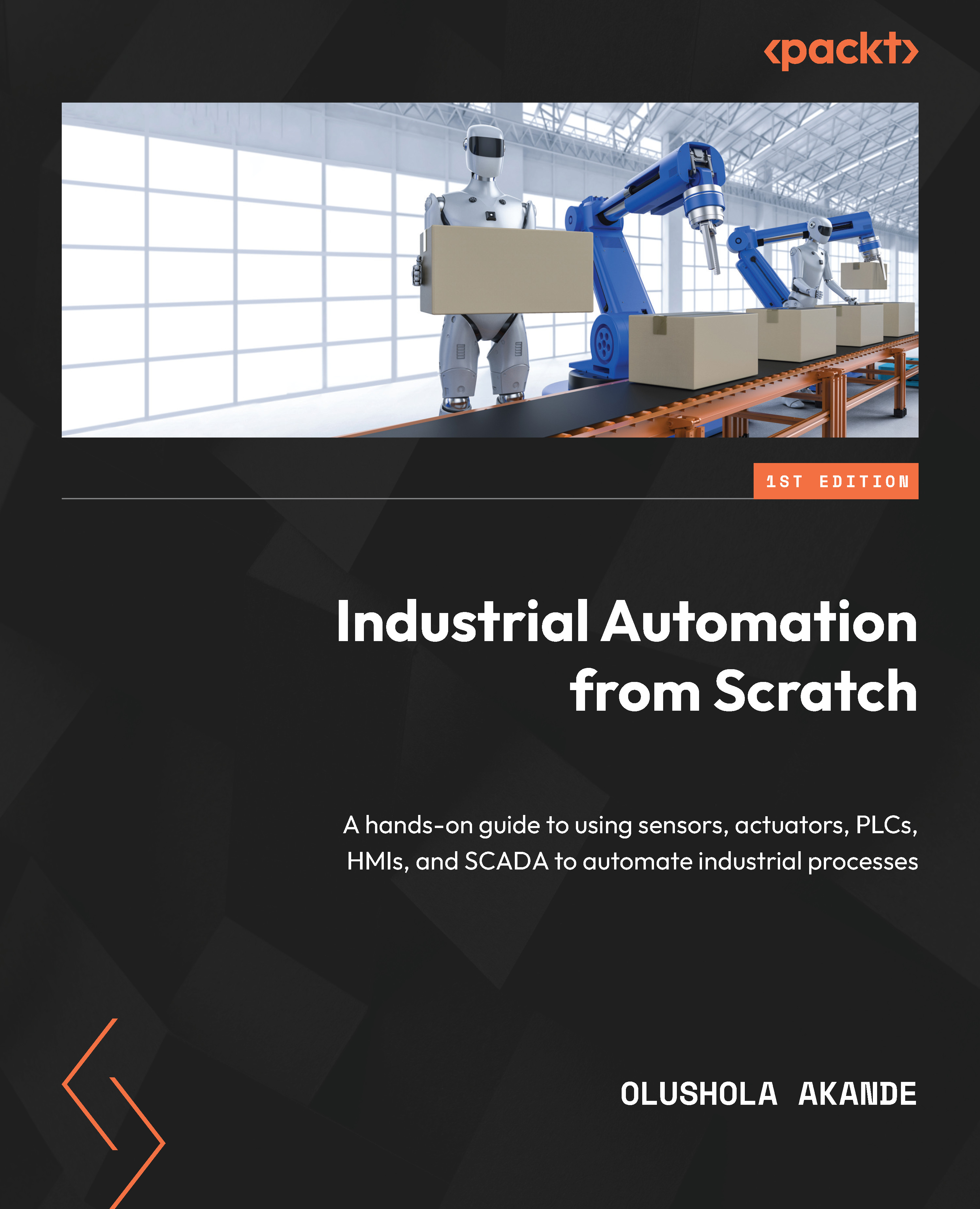Introducing industrial automation
Industrial automation is where computers, robots, and other control devices are used to operate machines and equipment that's used in manufacturing or processing plant with little human intervention.
A set of sequential operations are established in a factory where components are assembled to make a product or where materials are put through a refining process to produce an end product that is suitable for consumption (that is, a production line or assembly line). This usually consists of machines and tools that need to be operated to get the finished product. Before industrial automation, items (such as mugs, spoons, pots, and so on) were hand-made by individual craftsmen and women and it could take hours or days to manufacture a single item.
There was a development in the 18th century where, instead of items being produced by hand, processes were invented that allowed items to be produced by machines. These machines/tools were operated by humans. Hence, we can refer to the items that are produced through this process as man-machine made. This process dramatically reduces production time and costs compared to the hand-made method. A further shift in manufacturing was the introduction of assembly lines/production lines in the 19th century, which further reduced production time and costs as different workers could operate different machines in different sections of the production or assembly lines, leading to mass production. Nowadays, many factories have machines/tools in the production line being operated automatically by devices and control systems. Repetitive tasks such as filling, capping, and stamping are now automated.
A worker in a factory assembly line uses their eyes to see, their ears to hear, their brain to think, and their hands to move things or perform the required actions on the assembly line. With industrial automation, the activities/operations that are typically performed by the worker can be replaced by a control system where sensors do the job of the eyes and ears, a controller does the job of the brain, and an actuator does the job of the hands. Hence, sensors, controllers, and actuators, which we will look at in more detail in the subsequent chapters of this book, can replace a worker in a factory assembly line. In some manufacturing processes, an assembly line that requires one hundred staff members can eventually require just one or two people doing that through industrial automation. With the introduction of artificial intelligence (AI), machines that can even think like humans are being developed to handle human operations that we could not previously even imagine being handled by a machine.
Industrial automation can also be defined as being able to control machinery and equipment in an industry by using personal computers (PC), programmable logic controllers (PLCs), sensors, actuators, and other control devices to minimize the human involvement in the manufacturing or production processes. PCs, PLCs, and other forms of controllers replace human decision-making; the sensors replace the eyes and ears, while the actuators replace the hands, as explained previously. PCs, PLCs and other forms of controllers have programs (a set of instructions) written into them that enable them to make decisions based on the state of the sensors. The results of these decisions are used by the actuator to perform the action that the worker would have done.
The following figure shows an example of industrial automation using a KUKA industrial robot. Jobs, which are typically done by humans, are being carried out by robots (programmed machines):

Figure 1.1 – Industrial automation in a vehicle manufacturing assembly line using a KUKA industrial robot
This image is licensed under Wikimedia Commons: https://creativecommons.org/licenses/by-sa/4.0/deed.en.
Besides manufacturing, the transportation industry is another area where industrial automation can be applied, where self-operating vehicles are used for both private and commercial purposes – autopilot control in commercial jets enables jets to travel without human pilots. Warehouses, buildings, and other industries also benefit from industrial automation.
With that, you have learned that industrial automation involves using devices that operate machines automatically with little human involvement, which has significantly improved manufacturing and other industries. The knowledge you have acquired in this section will help you understand the various forms of automation we will look at in the next section.



























































